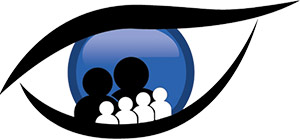 Your vision is priceless. Comprehensive eye examinations not only ensure good vision and eye health but peace of mind.
Your vision is priceless. Comprehensive eye examinations not only ensure good vision and eye health but peace of mind.
Since not all patients are at the same point in their visual life each comprehensive eye examination is tailored to the specific risks of the patient. Every exam begins with a complete patient history that includes general health questions, family health history, ocular health history, medications, hobbies and work environments.
We usually believe that the eye exam is all about seeing well with the use of glasses but that is only a small portion of the actual exam. Visual acuity is measured both at near and distance. Binocular vision or how the two eyes work together is assessed to ensure smooth comfortable vision at all distances.
The medical portion of the exam is when the optometrist observes the external and internal structures of the eye. In many cases this is enhanced through the use of eye drops to stain the eye, numb the eye, and dilate the eye. Pressure measurements are taken to determine risk for silent diseases like glaucoma and compared to normative datasets based on age and corneal thickness. Dr. Saari takes this one step further and obtains baseline images for future comparison should an eye disease develop.
The optometrist discusses the findings with the patient and clarifies any questions about risk, determines the appropriate frequency of examination, makes referrals, and orders additional tests as necessary. Since 2011, optometrists have been able to prescribe medications to treat many conditions including eye infections, glaucoma, inflammation, allergies and many more.
The comprehensive eye examination is more than just “1 or 2” it’s about taking looking at the entire picture that is your eyes and identifying areas of risk that may threaten your sight. Early identification and treatment of these conditions is the key to protecting your sight.





 Open today until 5pm
Open today until 5pm
